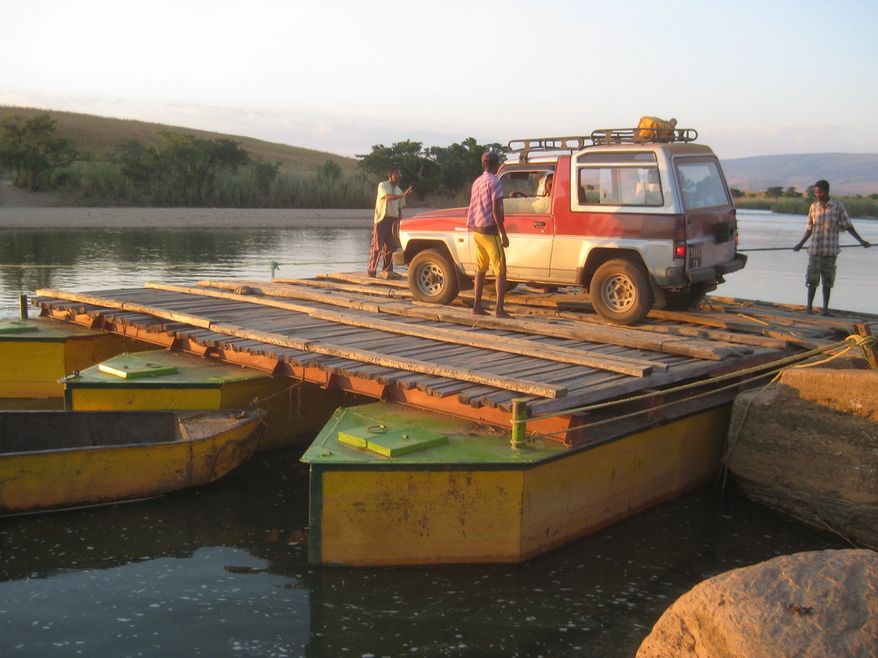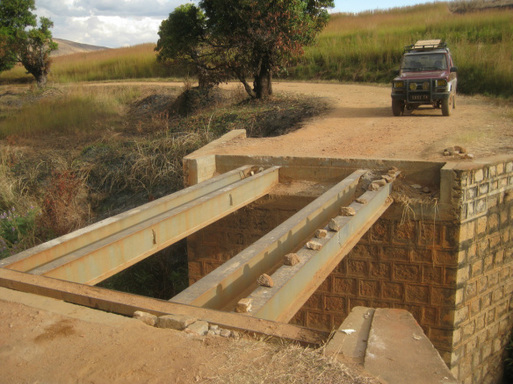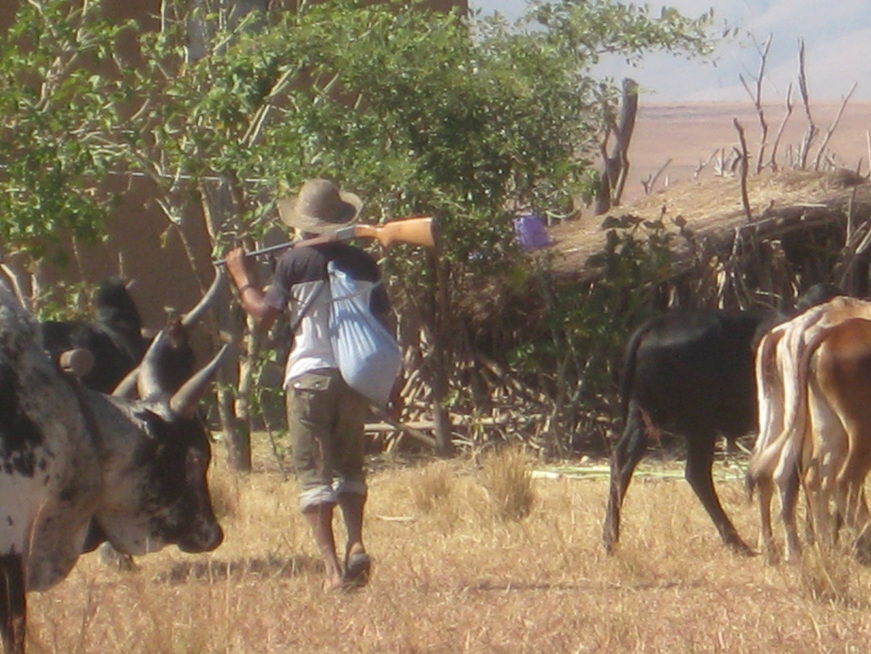|
I returned to Madagascar this year with two projects in mind - a solar hot water system and the repair of PV systems in remote clinics. My time was limited to six weeks, but in the end, that proved to be sufficient. I had already decided to wind down the operation in Madagascar and this trip was, in a sense, a farewell tour. Last year I had promised my good friend Zoe, that I would install a solar hot water system in Akany Tafita, the children's center in Anosibe, a very poor quartier of Tana, where I had stayed previously. They had added a second floor to the building that included classrooms upstairs, along with two studio apartments. This expansion was designed to increase the center's revenue stream from social functions on the ground floor and rentals from the apartments above. Although I had just gained some experience installing a solar hot water system in Burma, I was a little nervous about working on a sloped metal roof, as my left knee had recently given out, and could not be relied on. Imagine my delight when I found out that the purchase price of the system include free installation! In the end, this was the best solution as there was some heavy lifting and complex welding involved, and the days when I could do that on a slippery metal roof are behind me now. With myself in the role of supervisor, the installation was completed in three days, as the team from Majinco Solar was quite competent and professional. What a joy to have a hot shower on a cool evening in Tana! This hot water system will be of great benefit to the children's center – it will make the apartments more attractive to tenants and the kids can have hot showers, something they would never have at home. Extra hot water will be used for laundry and dish-washing. Improved health, increased self esteem and a sense of well-being are all benefits we expect to flow from this new access to solar hot water. Last year, during the solar PV trainings I conducted in several villages, I learned that many remote clinics had solar systems that were no longer functioning. They had been installed by NGOs from France and Finland about 7 or 8 years ago and now the batteries were dead. I worked with Ny Tanintsika, a local NGO, to select the eleven clinics to visit. Some we could repair on the spot, some I had to return to Tana to buy new batteries etc. Interestingly, the quality of the original equipment and installation was usually high, but sometimes the original design was flawed, and the systems never performed properly or for very long. I hired a truck from Ny Tanintsika and with driver, guide and translator, we headed off into the wilds of Madagascar. And I mean the wilds! We had to cross rivers by ferry, replace the wooden road-bed on bridges and pass through country well-known for banditry. It was indeed, one of the great Solar Roots hard-traveling adventure trips. We had our share of adventures too – we crossed a rickety bridge without difficulty on the outward journey, but imagine our surprise on the return leg to find that the wooden beams had all been stolen and that there was no way to cross. Luckily, after a couple of hours, a big Mercedes truck arrived with just enough beams and tree trunks aboard to get us both across. (I guess these truckers have to be prepared for any eventuality!). I have difficulty accepting that certain individuals would be so selfish as to steal these beams and leave several communities, comprising of thousands of people, isolated from the rest of the country, from emergency health care and indeed from daily supplies trucked in over that bridge. One interesting thing was the reception we got from the staff at the various clinics. Usually, they were delighted that we had restored electric light to the clinic and they expressed their thanks profusely, sometimes with personal gifts for me, once including a chicken! But sometimes things turned sour when it became apparent that my primary mission was to ensure that the lights in the clinic functioned, even if that meant disconnecting the TV/video and cell phone charging station that the doctor and midwife had going on as little side businesses. But I was firm in my resolve – my funds and my mission were dedicated to the benefit of the patients and improving the quality of health care. I came across other incidences of malfeasance, like the case where no patients could stay overnight in one clinic because the previous doctor had stolen all but two of the mattresses. One repair job, in the village of Ankaramena, gave me particular satisfaction. The doctor was an unassuming man who was himself disabled, as a result of a physical assault. He had never had electricity in his own house before and I felt privileged to be able to provide that small service for him. Unfortunately, we didn't get much time to spend with the clinic staff, to get to know them better. Usually, we had to do the repair and get back on the road, so we could arrive at the next site before night fell. Traveling at night in remote, bandit country in Madagascar is not recommended. As I mentioned in Burmese Times #6, we regularly had to pass the as-yet incomplete monument to the Catholic priest who was shot dead in his car, only a month earlier. The economy and rule of law have deteriorated so much since the coup d'etat four years ago, that the police and the bandits work hand-in-hand. Sometimes, police weapons are actually used in the commission of robberies. All-in-all, we visited eleven clinics, made repairs to nine of them, replaced twelve batteries, four charge controllers, one PV panel and two inverters. This work was made possible by a very generous donation from the Fort Fund of San Francisco, which covered most of the equipment cost and vehicle hire. Solar Roots donations paid for the remainder. So, my time in Madagscar is at an end. I have learned many things about the country and about myself. But I feel it's time to move on. Next year I will concentrate on Myanmar, and setting up a permanent workshop and training center there.
0 Comments
Leave a Reply. |
Archives
March 2017
Categories
All
|













 RSS Feed
RSS Feed